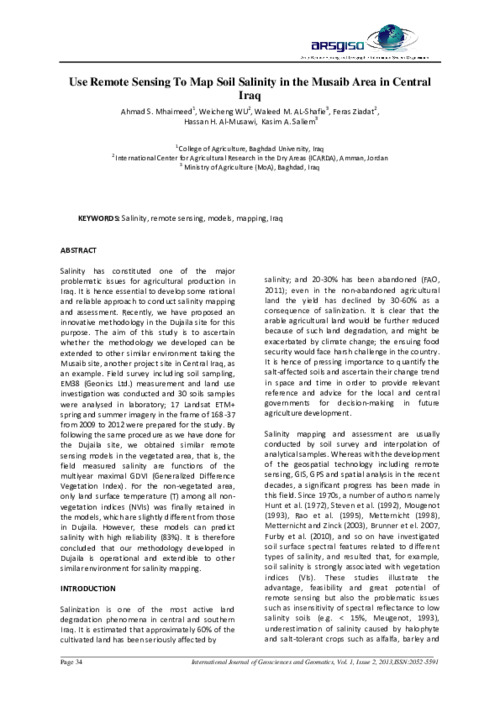Use Remote Sensing To Map Soil Salinity in the Musaib Area in Central Iraq
Abstract
Salinity has constituted one of the major problematic issues for agricultural production in Iraq. It is hence essential to develop some rational and reliable approach to conduct salinity mapping and assessment. Recently, we have proposed an innovative methodology in the Dujaila site for this purpose. The aim of this study is to ascertain whether the methodology we developed can be extended to other similar environment taking the Musaib site, another project site in Central Iraq, as an example. Field survey including soil sampling, EM38 (Geonics Ltd.) measurement and land use investigation was conducted and 30 soils samples were analysed in laboratory; 17 Landsat ETM+ spring and summer imagery in the frame of 168-37 from 2009 to 2012 were prepared for the study. By following the same procedure as we have done for the Dujaila site, we obtained similar remote sensing models in the vegetated area, that is, the field measured salinity are functions of the multiyear maximal GDVI (Generalized Difference Vegetation Index). For the non-vegetated area, only land surface temperature (T) among all non-vegetation indices (NVIs) was finally retained in the models, which are slightly different from those in Dujaila. However, these models can predict salinity with high reliability (83%). It is therefore concluded that our methodology developed in Dujaila is operational and extendible to other similar environment for salinity mapping

